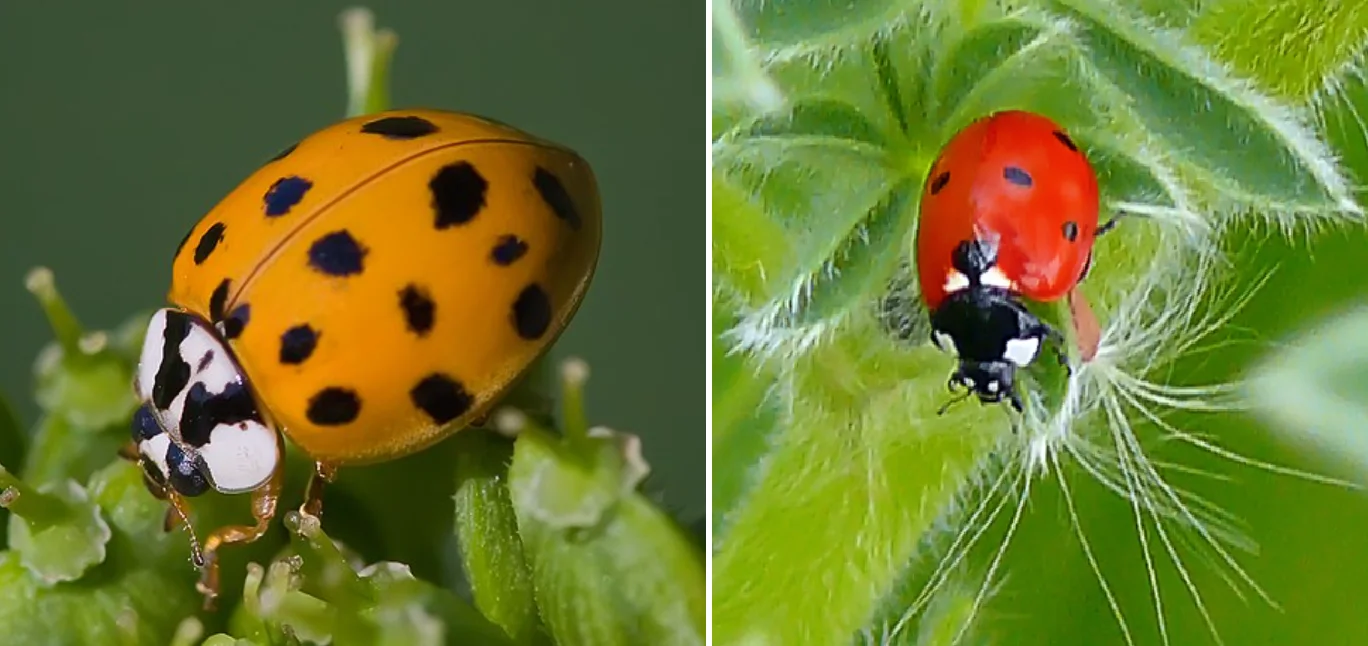
Top insects that caught our attention in 2021
This is what all the buzz what about.
Animals, plants, and insects have always been there - but maybe we've just noticed them more since COVID-19 had a lot of us spending more time getting up close and personal with nature.
Despite all that happened this year, stories featuring insects consistently ranked among our most-read (non-weather) stories.
Here are some of the creatures that caught your attention.
MURDER HORNETS
Let's kick things off with the unofficial mascot of the pandemic - the murder hornet, which began making headlines about two months into lockdowns in 2020.
In August, the officials spotted the first murder hornet of 2021 near the Canadian border, in Washington's Whatcom county not far from B.C.
They rushed to eradicate that nest, along with any others to prevent the species from becoming established in the area.
A BIG THREAT
Murder hornets are among the world's largest, with female workers that can grow up to four centimetres in length.
In the late summer and fall, worker hornets may come together to attack the nests of other insects, particularly honeybees. They are efficient killers, able to wipe out entire colonies within a few hours.
Once a colony has been wiped out, the murder hornets turn to the immature bees left behind in their wax cells, which they use to feed their larvae.
In its native Asia, honeybees have developed a defense, quickly surrounding a hornet and vibrating their muscles, using friction to generate enough heat to overwhelm it.
North American bees are just beginning to develop ways to scare them off, prompting scientists to step in.
The hornets also pose a risk to humans, with stingers about 4.5 mm longer than a honeybee's.
Murder hornet venom contains a neurotoxin called mandaratoxin. A single sting isn't typically lethal, but multiple stings can kill a human.
CICADAS
It was the summer of the cicada in the U.S.
After spending 17 years underground, billions of Brood X (Brood 10) cicadas took over 15 U.S. states in the summer, with trillions of the bugs crawling around areas between Georgia and New York, making near-daily headlines.
From car accidents to delayed planes, cicadas seemed to be causing problems everywhere. And then - in the blink of an eye, they were gone again. Brood X reigned for about six weeks, dying out between June and July, only to be replaced with less plentiful, annual cicadas.
APHIDS
After a hot and dry summer for much of the Prairies, aphids, also referred to as 'tree lice,' thrived - and they congregated on trees, leaving a sticky mess behind.
"I checked on my car after it rained, and I was surprised to find a syrupy substance all over the vehicle," recalls Lia Nardone, the social media coordinator for The Weather Network, based in Moose Jaw, Saskatchewan.
"It was almost like glue. I'm new to Saskatchewan, and I've never seen anything like this before. When I found out the substance was bug feces that sometimes rains down from the sky, I was immediately grossed out."
"The plant fluids are rich in sugar and water, but relatively poor in nutrients," James Tansey, Ph.D., a provincial entomologist for the Saskatchewan Ministry of Agriculture, told The Weather Network.
"They need to process a lot of [sap] to get nutrients for growth and reproduction."
That essentially leaves them in a "perpetual state of diarrhea," Tansey said.
In Winnipeg, Manitoba, city officials received complaints from residents about the goo, but they couldn't do much about the mess. And, because aphids reproduce so quickly - about once every seven days - it's difficult to curb their population, at least until the weather changes.
A small number of aphids won't typically hurt plants or trees, but large populations can damage leaves or stunt roots.
THE MARMORATED STINK BUG
Marmorated stink bugs were the talk of the town this fall, with numerous sightings across southern Quebec, Ontario, and British Columbia.
"They were first detected in Ontario in 2010," Cynthia Scott-Dupree, Ph.D., a professor of sustainable pest management at the University of Guelph, told The Weather Network in October.
"It has since become established in Ontario, Quebec, and British Columbia."
Stink bugs aren't toxic, but they are armed with a defense mechanism that isn't too hard to figure out, given their name.
When disturbed, they release a foul-smelling chemical, but you typically won't pick it up unless there's a group of them.
You'll likely see brown marmorated stink bugs congregating on brick surfaces on warm autumn days, attempting to absorb some of the heat. They're also looking for a way to get inside.
If they do find their way indoors, here's the good news: They aren't likely to cause any structural damage and don't bite, nor do they sting. But when you zoom out to a nationwide scale, they come with their fair share of problems.
The marmorated stink bug feeds on about 170 species of plants - namely agricultural, posing a risk to farmers. In 2010, they decimated apple crops in the Mid-Atlantic United States, resulting in $37 million (U.S.) in damages.
THE ASIAN MUTLICOLOURED LADY BEETLE
There are about 6,000 lady beetle species worldwide. About 166 of those are in Canada, and not all of them are native.
In Canada, native species tend to be docile, and they feed on pests insects, like crop-damaging aphids.
But the Asian multicoloured lady beetle is a different story. It can be hard to differentiate them from native species, but there are some telltale signs.
First, look at their colour and markings, Christine Noronha, a research scientist at Agriculture and Agri-Food Canada, told The Weather Network in October.

Invasive Asian lady beetles (left) have an "M" pattern at the back of their head, while native species (red) do not. Lady beetles. (Andreas Trepte/Zachi Evenor/Wikipedia)
Native lady beetles are red with black spots. The multicoloured Asian lady beetle ranges in colour from tan to yellow to orange to red. Another way to tell them apart is by looking at the back of the head, the thorax, which has a black 'M' shape. Their bodies are slightly longer and more oval, whereas native lady beetles are rounder.
Asian lady beetles are aggressive, and they tend to take over habitats, displacing native species. They also bite, unlike native species. A bite from one of these bugs will feel like a pinch, but it can break the skin.
THE BOXELDER BUG
Another insect that made headlines this fall is the boxelder bug, a mostly harmless creature, although it can be unsightly and a little messy.
They like to hang out in groups, clumping together near windows and doors and excreting in a manner that could leave behind stains.
But be careful when getting rid of them, because you could find yourself on the receiving end of an unwanted surprise.
"You really should try and stay away from them if you can or avoid touching them because they can smell. They have a bad smell that keeps predators away, and that includes us but also birds and small mammals that would eat them," Sandy Smith, Ph.D. told The Weather Network in October.
"I wouldn't call them invasive, but invasive is really a very subjective term because it doesn't define whether they've always been here [in Canada] or not. 'Invasive' is whether they are taking over a space. If you're a homeowner with boxelders, I bet you feel like they're taking over your space."
In broader terms: boxelders are considered a 'native' species, common in eastern portions of Canada and the U.S.

Boxelders like to congregate in groups. (GIF created with video from Getty Images)
"They aren't really pests unless you don't like bugs," Sandy said, "and then of course they are an incredible nuisance for you."
Like all things, boxelder populations go through cycles. Mild winters mean adults are more likely to lay more eggs, and a warm, dry spring can lead to lots of seeds to feed one. These two factors can contribute to a population boom and heighten the risk of a boxelder party in your home come fall.
If you see them inside, it's likely because you left a door or window open, or there's a crack somewhere they can sneak in through. This species won't chew its way into your home.
"They're just looking for a place to shelter against the really cold days in January and February," Sandy said.
Thumbnail image courtesy: Canva Pro.










